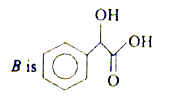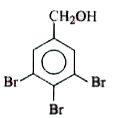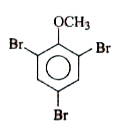An organic compound (A) containing 60.12% (C ) and 13.3% H has vapour density of 30. On oxidation it gives (B) (C3H6O) which on further oxidation by NaOH and I2 gives compound (C ) (C2H3O2Na). When (B) is treated with hydroxylamine, a compound (D) (C3H7NO) is formed. what are (A), (B), (C ) and (D) ?
To solve the problem step by step, we will identify the compounds A, B, C, and D based on the information provided.
Step 1: Determine the Molecular Formula of Compound A
Given:
- Percentage of Carbon (C) = 60.12%
- Percentage of Hydrogen (H) = 13.3%
- Vapor Density = 30
Calculate Molecular Weight:
Molecular weight = 2 × Vapor Density = 2 × 30 = 60 g/mol
Calculate the Percentage of Oxygen (O):
Percentage of Oxygen = 100% - (Percentage of C + Percentage of H)
= 100% - (60.12% + 13.3%) = 100% - 73.42% = 26.58%
Convert Percentages to Moles:
- Moles of C = 60.12 g / 12 g/mol = 5.01
- Moles of H = 13.3 g / 1 g/mol = 13.3
- Moles of O = 26.58 g / 16 g/mol = 1.66
Divide by the Smallest Number of Moles:
- C: 5.01 / 1.66 ≈ 3.01 ≈ 3
- H: 13.3 / 1.66 ≈ 8.01 ≈ 8
- O: 1.66 / 1.66 = 1
Thus, the empirical formula of compound A is C3H8O.
Step 2: Identify Compound A
Given that compound A is an organic compound with the formula C3H8O, it is likely to be a secondary alcohol. The structure can be represented as:
- Compound A: Isopropyl alcohol (C3H8O or (CH3)2CHOH)
Step 3: Determine Compound B
When compound A is oxidized, it forms compound B (C3H6O). The oxidation of isopropyl alcohol leads to the formation of acetone:
- Compound B: Acetone (C3H6O or CH3COCH3)
Step 4: Determine Compound C
Compound B (acetone) undergoes further oxidation with NaOH and I2, which indicates that it gives an iodoform reaction, leading to the formation of sodium acetate:
- Compound C: Sodium acetate (C2H3O2Na)
Step 5: Determine Compound D
When compound B (acetone) is treated with hydroxylamine, it forms an oxime:
- Compound D: Acetone oxime (C3H7NO)
Summary of Compounds
- Compound A: Isopropyl alcohol (C3H8O)
- Compound B: Acetone (C3H6O)
- Compound C: Sodium acetate (C2H3O2Na)
- Compound D: Acetone oxime (C3H7NO)
Given:
- Percentage of Carbon (C) = 60.12%
- Percentage of Hydrogen (H) = 13.3%
- Vapor Density = 30
Molecular weight = 2 × Vapor Density = 2 × 30 = 60 g/mol
Percentage of Oxygen = 100% - (Percentage of C + Percentage of H)
= 100% - (60.12% + 13.3%) = 100% - 73.42% = 26.58%
- Moles of C = 60.12 g / 12 g/mol = 5.01
- Moles of H = 13.3 g / 1 g/mol = 13.3
- Moles of O = 26.58 g / 16 g/mol = 1.66
- C: 5.01 / 1.66 ≈ 3.01 ≈ 3
- H: 13.3 / 1.66 ≈ 8.01 ≈ 8
- O: 1.66 / 1.66 = 1
Given that compound A is an organic compound with the formula C3H8O, it is likely to be a secondary alcohol. The structure can be represented as:
- Compound A: Isopropyl alcohol (C3H8O or (CH3)2CHOH)
When compound A is oxidized, it forms compound B (C3H6O). The oxidation of isopropyl alcohol leads to the formation of acetone:
- Compound B: Acetone (C3H6O or CH3COCH3)
Compound B (acetone) undergoes further oxidation with NaOH and I2, which indicates that it gives an iodoform reaction, leading to the formation of sodium acetate:
- Compound C: Sodium acetate (C2H3O2Na)
When compound B (acetone) is treated with hydroxylamine, it forms an oxime:
- Compound D: Acetone oxime (C3H7NO)
- Compound A: Isopropyl alcohol (C3H8O)
- Compound B: Acetone (C3H6O)
- Compound C: Sodium acetate (C2H3O2Na)
- Compound D: Acetone oxime (C3H7NO)
Topper's Solved these Questions
- BOOK - CENGAGE CHEMISTRY ENGLISHCHAPTER - ALIPHATIC AND AROMATIC ALDEHYDES AND KETONESEXERCISE - Exercises Concept Application20videos
ALIPHATIC AND AROMATIC ALDEHYDES AND KETONES
- BOOK - CENGAGE CHEMISTRY ENGLISHCHAPTER - ALIPHATIC AND AROMATIC ALDEHYDES AND KETONESEXERCISE - Exercises Linked Comprehension59videos
ALIPHATIC AND AROMATIC ALDEHYDES AND KETONES
- BOOK - CENGAGE CHEMISTRY ENGLISHCHAPTER - ALIPHATIC AND AROMATIC ALDEHYDES AND KETONESEXERCISE - Solved Examples13videos
ALIPHATIC AND AROMATIC ALDEHYDES AND KETONES
- BOOK - CENGAGE CHEMISTRY ENGLISHCHAPTER - ALCOHOL,PHENOL AND ETHERSEXERCISE - Archives Analytical And Descriptive15videos
ALCOHOL,PHENOL AND ETHERS
- BOOK - CENGAGE CHEMISTRY ENGLISHCHAPTER - APPENDIX INORGANIC VOLUME 2EXERCISE - Short Answer Type179videos
APPENDIX INORGANIC VOLUME 2
Similar Questions
An organic compound contains 66%C and 13.3%H. Its vapour density is 37. The possible number of isomers of resonance is not correct?
View SolutionAn organic compound (A),C8H4O3 in dry benzene in the presene of anhydorus AlCl3 gives compound (B). Compound (B) on treatment with PCl5 followed by reaction with H2/Pd(BaSO4) gives compound (C) which on reaction with hydrazine gives a cyclised compound (D),(C14H10N2) Idenyify (A),(B),(C) and (D). Explain the formation of (D) from (C).
View Solution
Knowledge Check
- Question 1 - Select One or More
Compound (A) C8H6O2 on treatment with aq. NaOH followed by acidification gives (B) C3H2O3 which on oxidation gives benzoic acid only:
A B
B C
C D
D
- Question 2 - Select One
Compound (A) C7H8O is insoluble in aqueous NaHCO3 and dissolves in aqueous NaOH and gives a characteristic colour with neutral FeCl3 . When treated with Br2 (A) forms compound (B) C7H5OBr3 .
The structure of compound (B) would be :A B
B C
C D
D
An organic compound (A) (C8H14O) forms an oxime and gives a positive haloform reaction. On ozonolysis, it gives acetone and a compound (B) (C5H8O2) . (B) forms a dioxime and on subjecting to oxidation reaction gives an acid (C ) (C4H6O4). On treatment with excess of ammonia and strong heating, (C ) gives a neutral compound (D) (C4H5O2N). (D) on distillation with zinc dust forms pyrrloe. Suggest the possible structures of (A), (B), (C ), and (D). Explain the chemical reactions involved.
View SolutionAn organic compound 'A'(C4H10O) is optically active. On mild oxidation, it gives a compound 'B'(C4H8O) but upon vigorous oxidation, it gives another compound 'C'(C3H6O2). The compound 'C' along with 'D' are also formed from 'B' by reacting with iodine in the presence of alkali. Deduce the structures of 'A','B','C' and 'D'.
View SolutionAn organic compound (A) (C6H10O) on reaction with CH3MgBr followed by acid treatment gives compound (B). The compound (B) on ozonolysis gives compound (C ), which in the presence of a base gives 1-acetyl cyclopentene (D). The compound (B) on reaction with HBr gives compound (E ). Write the structures of (A), (B), (C ), (D), and (E ). Show how (D) is formed from (C ).
View SolutionAn organic compound (A) (C5H7OCl) reacts rapidly with ethanol to give (B) (C7H12O2). (A) also reacts with water to produce an acid which reacts with bromine to give (C ) (C5H8Br2O2). (B) on boiling with H2SO4 forms an acid (D). When (D) is oxidised with KMnO4 an acid (E ) (C4H6O3) is produced. On mild heating, (E ) gives (F) (C3H6O) which cannot be oxidised by ammoniacal AgNO3. Identify the compounds (A) to (F).
View SolutionAn organic compound (A) , C4H8Cl2 on hydrolysis forms another compound (B) , C4H8O.
If (B) does not responds to iodo form test , then identify possible structures of (A) and (B).View SolutionA compound 'X' (C2H4O) on oxidation gives 'Y' (C2H4O2). The compound 'X' undergoes haloform reaction. Write the structure of 'X' and 'Y'.
View Solution
